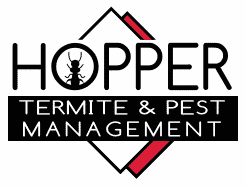Ant Control
Ant Pest Control in Heber Springs & Batesville, AR:
Ants are social insects that live in colonies that can have ant populations in the thousands. Depending on the species of ant, a colony may only have one queen, or there can be multiple queens. Some ant species can even have satellite colonies, meaning more than one nest. Worker ants forage for food, care for the queen and the young, and defend the colony. When you see ants in or around your home or business, you are seeing the worker ant.
Ants typically build their nest outside and enter structures to forage for food; however some ant species can build satellite colonies inside structures. Thus, the number one step in effective ant control is properly identifying the ant species. This is because each ant species can require different strategies and techniques for control.
Whether you are located in Heber Springs, Batesville, Conway, Clinton, Fairfield Bay, or anywhere in between, ants can be a real concern. There are many different species of ants found throughout Arkansas. Some species that are common are: Odorous House Ant, Acrobat Ant, Fire Ant, and Carpenter Ant.
Odorous House Ant: Tapinoma Sessile (say)
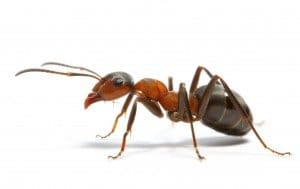
Intro: Commonly found throughout the United States, these ants are small with dark bodies. Their name is derived from the strong rotten coconut-type odor the produce when smashed.
Color: black or brown
Size: 1/16 to 1/8 inches
Nesting sites: tend to nest in structures around pipes, cabinets, in walls, between insulation, crawlspaces, and exposed soil.
Food Preference: sweet materials (sugar, honey, etc.…), but will also eat fats, such as grease.
Acrobat Ant: Crematogaster spp.
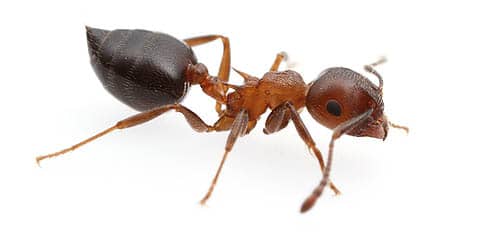
Intro: Commonly found throughout the United States, these ants are small. They tend to raise their abdomens in the air when disturbed, making them look acrobatic. The abdomen is heart shaped and typically black and shiny.
Color: brown to black
Size: 1/16 to 1/8 inches
Nesting sites: tend to nest in damp mulch areas, under stones, in tree stumps and under dirt filled porches.
Food Preference: feed on small bugs and honeydew excreted from aphids and other insects.
Carpenter Ant: Camponotus spp.
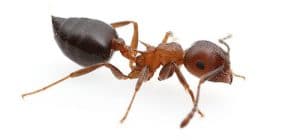
Intro: Carpenter ants are a large ant. About 20 species of carpenter ants can be found throughout the United States. Carpenter ants get their name from cutting their nest galleries in wood. Only a few species cause heavy damage to wood, most species choose wood that has already been damaged by wood destroying fungi.
Color: depends on species- from red to black or a combination.
Size: 5/8 inch
Nesting sites: build nest outdoors in various wood sources, but can enter indoors into moist deteriorating wood.
Food Preference: Carpenter ants DO NOT EAT WOOD, like termites, rather they deposit the debris outside their nest.
Fire Ant: Solenopsis spp.
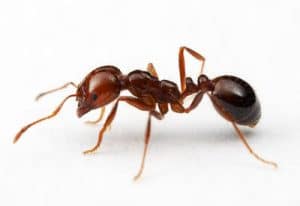
Intro: Typically found the most in the southern part of the United States, but are spreading north. Fire ants bites and stings can be very painful, even fatal. Their coloring is the most distinguishing characteristic. These ants are aggressive when their nest is disturbed.
Color: Yellowish red head and thorax and black abdomen.
Size: range from 1/4 to 1/16 inches
Nesting sites: They build nest in soil and typically build large mound nest. They will also infest voids in buildings near soil, electrical and cable boxes.
Food Preference: prefer proteins, but will also feed on sweets, vegetation and seeds.
At Hopper Termite and Pest Management our trained and licensed pest control technicians will follow a five-step process to help eliminate your ant problems.
- Perform an inspection to properly identify the ant species.
- Locate the nest or nests, by following active ant trails that worker ants have established.
- Used bait when practical for rapid and effective treatment of ant colonies.
- Apply a barrier treatment when applicable, to aid in stopping entry of ants from the outside, both current and for an extended period.
- Make recommendations for non-chemical pest control such as: Improved sanitation (denying ants food), sealing entry points (cracks and crevices), and changing landscaping to decrease nesting sites, and trimming trees and shrubs to deny easy access above ground level.
